Science
Stalking Starlink's 'DarkSat' – Universe Today
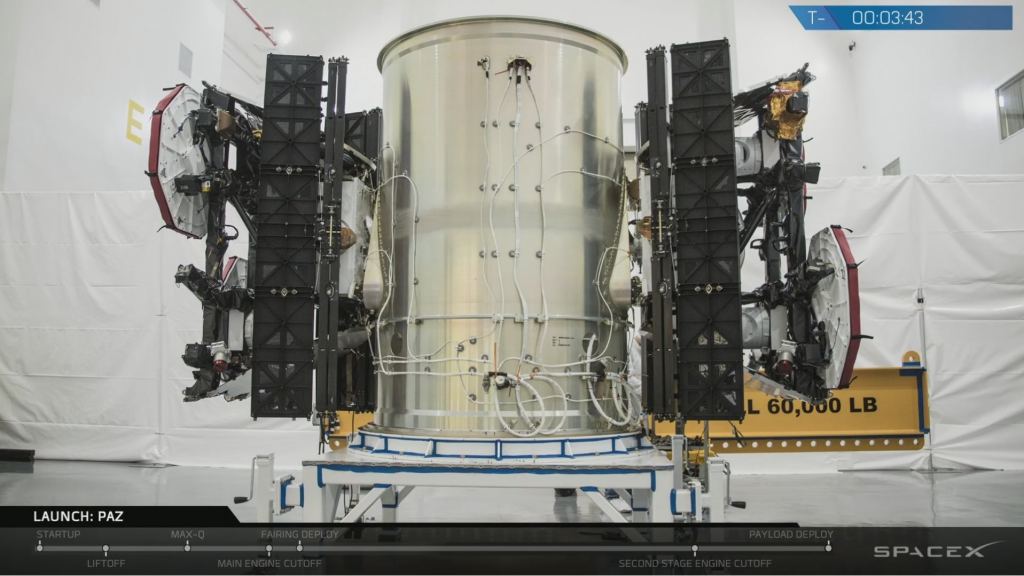
By now, you’ve no doubt heard of (or seen) Starlink. SpaceX’s mega-satellite constellation has become a permanent fixture in our skies as of late, with several routine passes on any given week. But have you seen the supposed ‘black sheep’ of the flock, DarkSat?
Starlink is looking to provide global internet access with latency (lag time) of 25/35 milliseconds, with connectivity speeds comparable to existing cable and fiber optic with services starting in late 2020. SpaceX recently announced that Starlink users will connect with the service via a ‘UFO on a Stick‘ antenna. (no kidding!)
Thus far, SpaceX has launched 182 Starlink satellites in three batches (that’s three times sixty, plus two early test satellites), and by the end of 2020, SpaceX will add nearly 1600 more satellites. SpaceX filed for 12,000 satellites to fill out the initial constellation, and there may ultimately be 42,000 Starlink satellites in low Earth orbit.
Each Starlink satellite is about the size of a table, and are flat-packed IKEA-style in the Falcon-9 nose fairing. Each satellite also sports a large solar panel that’s unfurled once they reach orbit.


Those numbers are also set to increase today, with the launch of Starlink 3 (batch number four) from Cape Canaveral Air Force station at 14:49 Universal Time (UT)/9:49 AM Eastern Standard Time (EST). SpaceX is now already the largest operator of satellites in low Earth orbit, and plans to reach a cadence of two Starlink launches a month, or one every two weeks.
The reality of ‘mega-satellite constellations’ such as Starlink in 2020 has also alarmed the astronomical community and generated controversy. Will artificial stars soon out number real ones in the night sky? This also comes as projects such as the Large Synoptic Survey Telescope (LSST) are set to come online in the coming years.
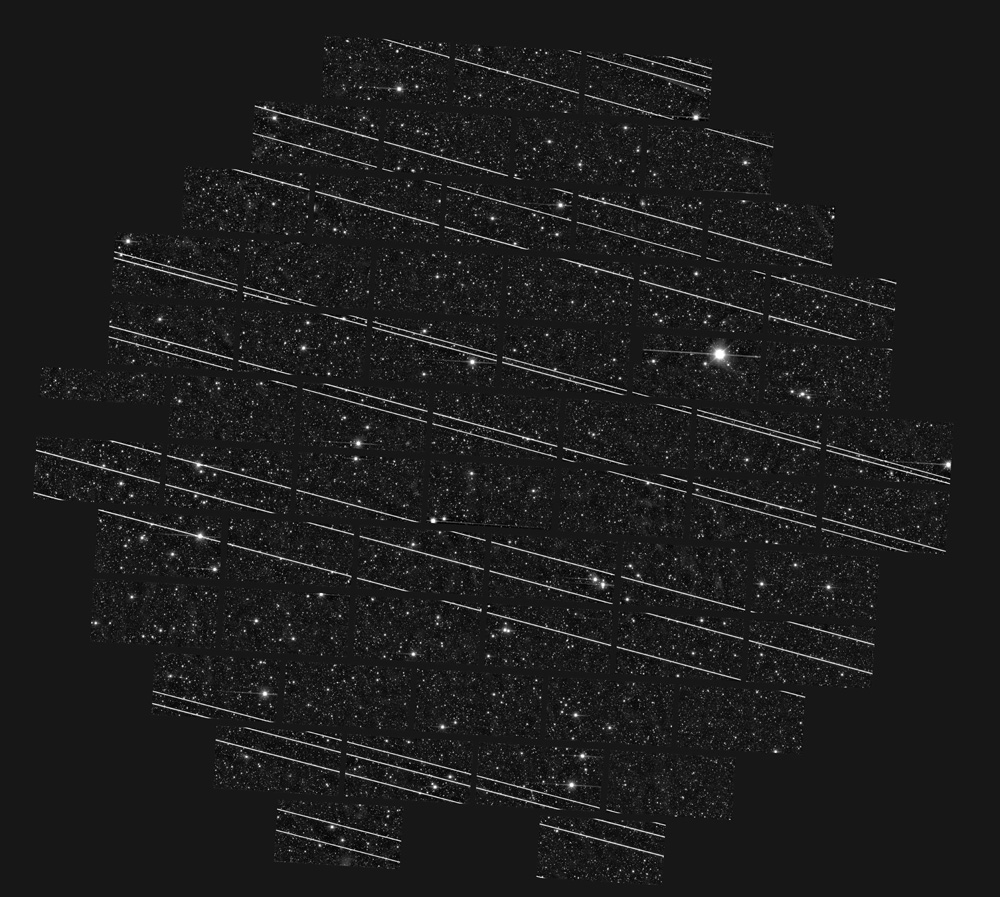

The Rise of DarkSat
SpaceX made an
effort to address the issue during the November launch, and stated
that they painted one of the new Starlink satellites black in an
effort to reduce reflectivity. To date, SpaceX has not released
images of just what ‘DarkSat’ looks like up close. Several US
classified satellites such as Lacrosse 5 typically pull a ‘vanishing
act’ and are suspected of using some sort of stealth technology,
though of course, the U.S. Department of Defense isn’t sharing this
ability with SpaceX.
It took a while for
the identity of the rumored DarkSat to become general knowledge.
Typically, objects are cataloged by U.S. Combined Space Operations
Center (CSpOC) Space-Track shortly after launch, but the flood of new
objects generated by a typical Starlink launch poses a unique
challenge. The third batch launch (dubbed Starlink 2) that included
DarkSat put 60 objects in orbit.
T.S. Kelso over at Celestrak later identified DarkSat as NORAD ID 2020-001U (COSPAR ID 44932).
[embedded content]
A discussion panel at the recent 235th meeting of the American Astronomical Society addressed the Starlink issue. “The LSST survey is the most impacted by bright satellite trails because of its wide-fast-deep coverage of the sky,” Says Patrick Seitzer (University of Michigan) during the AAS panel on Starlink. “Original Starlinks will saturate detectors.” LSST is set to see first light in 2022.
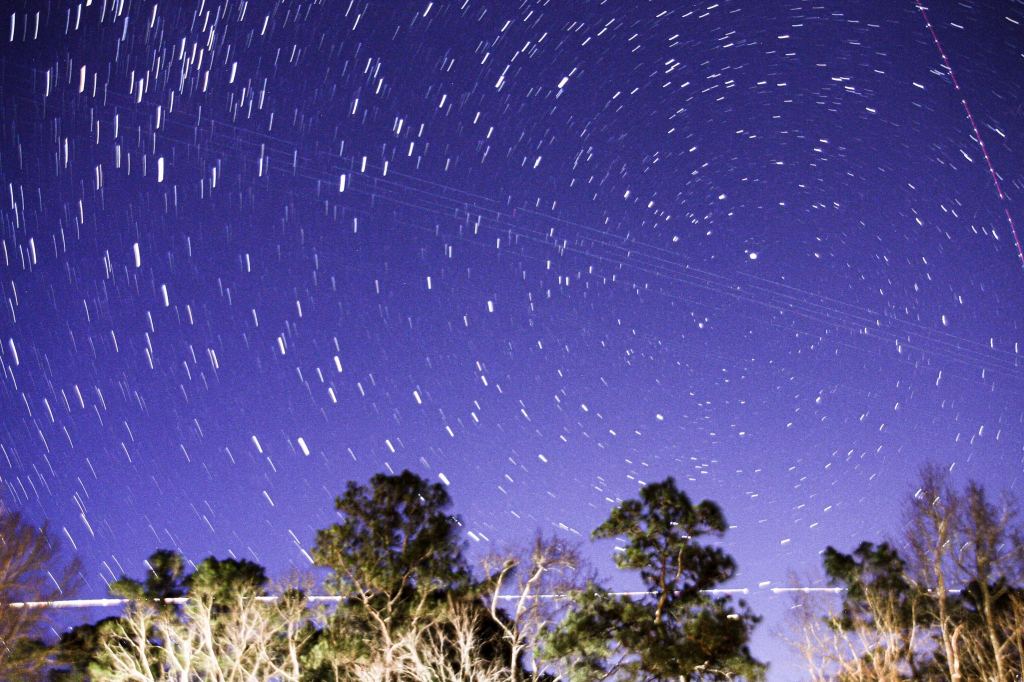

The Starlink
satellites are also much more visible during original deployment than
when they reach operational orbits higher up. For comparison, the
original Iridium satellites were placed in an operational orbit 781
kilometers (485 miles) up, and where only visible to the naked eye
when they flared. The Starlink mega-constellation will deploy in
three orbital shells with operational altitudes of 340 kilometers
(210 miles), 550 kilometers (340 miles) and 1,150 kilometers (710
miles) respectively. As of writing this, DarkSat 2020-001U’s orbit
is still on the low end, at 366 by 368 kilometers. DarkSat should
reach operation altitude and orientation by the end of February 2020.
Like the Iridium
satellites, Starlink will also have an impact on the radio astronomy
end of the spectrum as well, something that’ll need to be
addressed.
What Observers are Seeing
Want to track Starlink and DarkSat for yourself? – All of the Starlink payloads are up on Heavens-Above on both the App and the website… this great utility is probably the easiest way to catch a Starlink pass. If you have the site configured for your location, simply look for a string of dawn or dusk passes, and watch the region of the sky noted during the given time. Note that the brightness of the Starlink satellite train seems to be heavily dependent on the viewing geometry: for example, we’ve seen lots of bright flaring flashes well into the negative magnitudes as the train passes the same spot in the sky when a pass is around 45 degrees in elevation opposite to the Sun, while the train seems to have the same steady brightness when passing directly overhead near the zenith. When the satellites are lower towards the horizon in the sunward direction, however, they are considerably fainter, and only visible with binoculars.
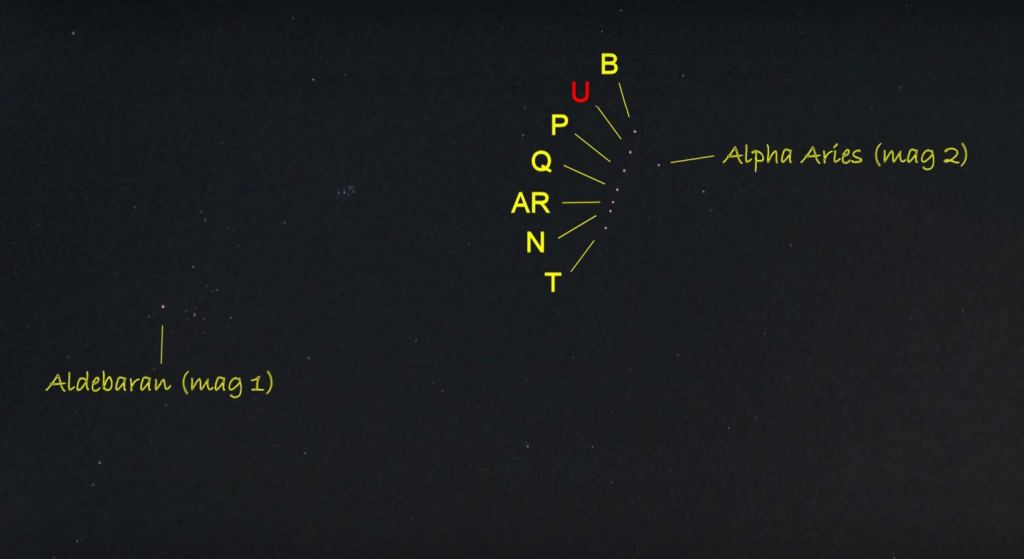

“For the moment, nothing looks different between Darksat and the others,” veteran astrophotographer Thierry Legault told Universe Today. “When I filmed them, the units of the last launch were brighter than magnitude +2, that’s very bright!!!”
[embedded content]
If Starlink-3
launches on schedule Monday, we can expect a deployment of the next
60 satellites in a ‘string of pearls’ configuration about an hour
later. Using orbital TLEs provided by Dr. Marco Langbroek, we see
good dusk passes Monday night centered on:
Paris: 16:45 UT
Norfolk: 22:45 UT
St. Louis: 00:20 UT
(on January 28th).
Los Angeles: 1:54 UT (on January 28th).
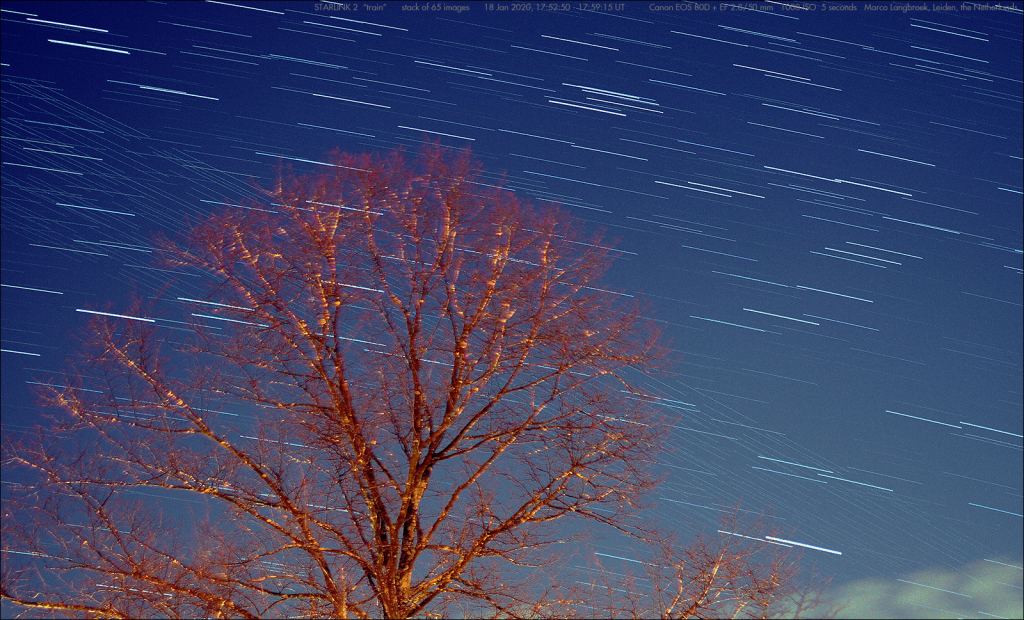

We managed to catch
a recent Starlink pass at dawn of the second batch launched in
November 2019 from here in Norfolk, Virginia as a set of two dozen
satellites equally spaced about five degrees apart caught the Sun’s
first rays passing out of the Earth’s shadow. They were also easily
visible to the naked eye, about as bright as the stars in the Big
Dipper asterism at magnitude +2.
Expect fielding an uptick in spurious UFO sightings versus Starlink as well. This is already happening, along with anomalous ‘mystery drone’ sightings out in the western U.S. OneWeb also plans to join the mega-satellite constellation game in 2020, with the launch of their first operational batch of 34 satellites from the Baikonur Cosmodrome in early February 2020. Based on the first test batch of six OneWeb satellites launched in February 2019 these satellites are much fainter at +8th magnitude, though these will still show up on deep sky images.
It’s strange that this is our new reality. Controversy notwithstanding, Starlink seems set to be a modern reality for the night sky, and backyard satellite trackers are playing a crucial role in documenting exactly what they are seeing as the modern mega-constellations unfurl overhead.
Follow us (@Astroguyz) on Twitter for latest updates on how to see the latest Starlink-4 satellite train in orbit.
Science
Scientists claim evidence of 'Planet 9' in our solar system – Supercar Blondie


A team of scientists claims to have evidence that there is another hidden planet – nicknamed ‘Planet 9’ – lurking in our solar system.
Of course, there have been changes to the number of planets in our solar system over recent – in space terms, anyway – years, as Pluto is no longer considered a proper planet.
Seems a bit harsh, doesn’t it?
However, a team of astronomers now believe that they have the strongest evidence yet that there is another mysterious planet hovering around our sun.
READ MORE! James Webb Telescope observes light on Earth-like planet for the first time in history
The theory that there could be other planets orbiting our star has been around for years, as scientists have noticed some unusual phenomena on the edge of the solar system that suggest the existence of another celestial body.
The theory that another planet is responsible would also explain the orbit of other objects that are outliers in our system, sitting more than 250 times Earth’s distance from the sun.
Scientist Konstantin Bogytin and his team have long been proponents of this ‘Planet 9’ theory, and now they believe they have ‘the strongest statistical evidence yet that Planet 9 is really out there’.
As we know, it wouldn’t be the only strange thing in our solar system.
Perhaps they just need to point a massive space telescope at it and they’ll find evidence of alien life out there.
This new study by Bogytin and his team focused on a number of Trans-Neptunian Objects (TNOs) that lie outside the orbit of Neptune towards the outer reaches of our solar system.
In analyzing the movements of these objects – which can be affected by the orbit of Neptune, as well as passing stars and the ‘galactic tide’ – the scientists concluded that there could be another unseen planet out there.
Dr Bogytin pointed out that there are other potential explanations for the behavior of these objects, but – he believes – Planet 9 is the best bet.
Once the Vera C. Rubin Observatory in Chile becomes active, we might get the best look we’ve had yet.
In a paper, the team wrote: “This upcoming phase of exploration promises to provide critical insights into the mysteries of our solar system’s outer reaches.”
That paper, entitled ‘Generation of Low-Inclination, Neptune-Crossing TNOs by Planet Nine’ is available to read here.
Images in this article were generated using AI
Science
Marine plankton could act as alert in mass extinction event: UVic researcher – Saanich News


A University of Victoria micropaleontologist found that marine plankton may act as an early alert system before a mass extinction occurs.
With help from collaborators at the University of Bristol and Harvard, Andy Fraass’ newest paper in the Nature journal shows that after an analysis of fossil records showed that plankton community structures change before a mass extinction event.
“One of the major findings of the paper was how communities respond to climate events in the past depends on the previous climate,” Fraass said in a news release. “That means that we need to spend a lot more effort understanding recent communities, prior to industrialization. We need to work out what community structure looked like before human-caused climate change, and what has happened since, to do a better job at predicting what will happen in the future.”
According to the release, the fossil record is the most complete and extensive archive of biological changes available to science and by applying advanced computational analyses to the archive, researchers were able to detail the global community structure of the oceans dating back millions of years.
A key finding of the study was that during the “early eocene climatic optimum,” a geological era with sustained high global temperatures equivalent to today’s worst case global warming scenarios, marine plankton communities moved to higher latitudes and only the most specialized plankton remained near the equator, suggesting that the tropical temperatures prevented higher amounts of biodiversity.
“Considering that three billion people live in the tropics, the lack of biodiversity at higher temperatures is not great news,” paper co-leader Adam Woodhouse said in the release.
Next, the team plans to apply similar research methods to other marine plankton groups.
Read More: Global study, UVic researcher analyze how mammals responded during pandemic
Science
The largest marine reptile ever could match blue whales in size – Ars Technica


Blue whales have been considered the largest creatures to ever live on Earth. With a maximum length of nearly 30 meters and weighing nearly 200 tons, they are the all-time undisputed heavyweight champions of the animal kingdom.
Now, digging on a beach in Somerset, UK, a team of British paleontologists found the remains of an ichthyosaur, a marine reptile that could give the whales some competition. “It is quite remarkable to think that gigantic, blue-whale-sized ichthyosaurs were swimming in the oceans around what was the UK during the Triassic Period,” said Dean Lomax, a paleontologist at the University of Manchester who led the study.
Giant jawbones
Ichthyosaurs were found in the seas through much of the Mesozoic era, appearing as early as 250 million years ago. They had four limbs that looked like paddles, vertical tail fins that extended downward in most species, and generally looked like large, reptilian dolphins with elongated narrow jaws lined with teeth. And some of them were really huge. The largest ichthyosaur skeleton so far was found in British Columbia, Canada, measured 21 meters, and belonged to a particularly massive ichthyosaur called Shonisaurus sikanniensis. But it seems they could get even larger than that.
What Lomax’s team found in Somerset was a surangular, a long, curved bone that all reptiles have at the top of the lower jaw, behind the teeth. The bone measured 2.3 meters—compared to the surangular found in the Shonisaurus sikanniensis skeleton, it was 25 percent larger. Using simple scaling and assuming the same body proportions, Lomax’s team estimated the size of this newly found ichthyosaur at somewhere between 22 and 26 meters, which would make it the largest marine reptile ever. But there was one more thing.
Examining the surangular, the team did not find signs of the external fundamental system (EFS), which is a band of tissue present in the outermost cortex of the bone. Its formation marks a slowdown in bone growth, indicating skeletal maturity. In other words, the giant ichthyosaur was most likely young and still growing when it died.
Correcting the past
In 1846, five large bones were found at the Aust Cliff near Bristol in southwestern England. Dug out from the upper Triassic rock formation, they were dubbed “dinosaurian limb bone shafts” and were exhibited in the Bristol Museum, where one of them was destroyed by bombing during World War II.
But in 2005, Peter M. Galton, a British paleontologist then working at the University of Bridgeport, noticed something strange in one of the remaining Aust Cliff bones. He described it as an “unusual foramen” and suggested it was a nutrient passage. Later studies generally kept attributing those bones to dinosaurs but pointed out things like an unusual microstructure that was difficult to explain.
According to Lomax, all this confusion was because the Aust Cliff bones did not belong to dinosaurs and were not parts of limbs. He pointed out that the nutrient foramen morphology, shape, and microstructure matched with the ichthyosaur’s bone found in Somerset. The difference was that the EFS—the mark of mature bones—was present on the Aust Cliff bones. If Lomax is correct and they really were parts of ichthyosaurs’ surangular, they belonged to a grown individual.
And using the same scaling technique applied to the Somerset surangular, Lomax estimated this grown individual to be over 30 meters long—slightly larger than the biggest confirmed blue whale.
Looming extinction
“Late Triassic ichthyosaurs likely reached the known biological limits of vertebrates in terms of size. So much about these giants is still shrouded by mystery, but one fossil at a time, we will be able to unravel their secrets,” said Marcello Perillo, a member of the Lomax team responsible for examining the internal structure of the bones.
This mystery beast didn’t last long, though. The surangular bone found in Somerset was buried just beneath a layer full of seismite and tsunamite rocks that indicate the onset of the end-Triassic mass extinction event, one of the five mass extinctions in Earth’s history. The Ichthyotian severnensis, as Lomax and his team named the species, probably managed to reach an unbelievable size but was wiped out soon after.
The end-Triassic mass extinction was not the end of all ichthyosaurs, though. They survived but never reached similar sizes again. They faced competition from plesiosaurs and sharks that were more agile and swam much faster, and they likely competed for the same habitats and food sources. The last known ichthyosaurs went extinct roughly 90 million years ago.
PLOS ONE, 2024. DOI: 10.1371/journal.pone.0300289
-



 Investment20 hours ago
Investment20 hours agoUK Mulls New Curbs on Outbound Investment Over Security Risks – BNN Bloomberg
-



 Sports19 hours ago
Sports19 hours agoAuston Matthews denied 70th goal as depleted Leafs lose last regular-season game – Toronto Sun
-
Media1 hour ago
Trump Media alerts Nasdaq to potential market manipulation from 'naked' short selling of DJT stock – CNBC
-
Business17 hours ago
BC short-term rental rules take effect May 1 – CityNews Vancouver
-
Art17 hours ago
Collection of First Nations art stolen from Gordon Head home – Times Colonist
-



 Investment17 hours ago
Investment17 hours agoBenjamin Bergen: Why would anyone invest in Canada now? – National Post
-



 Tech20 hours ago
Tech20 hours agoSave $700 Off This 4K Projector at Amazon While You Still Can – CNET
-



 Tech19 hours ago
Tech19 hours ago'Kingdom Come: Deliverance II' Revealed In Epic New Trailer And It Looks Incredible – Forbes





